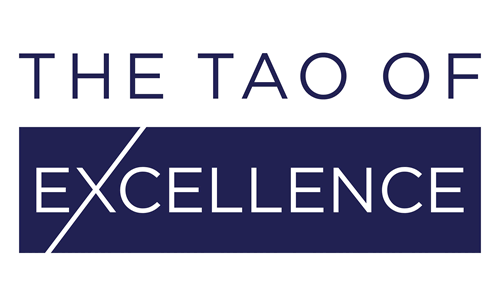When the new MDR was first announced in May 2017, we saw it at a distance. It would take three years until its implementation in May 2020 and so at that time it was a plan, a proposal, a ground-breaking idea that most were unsure of what it would actually look like. Two years into this process tells a different story. MedTech seminars, conferences and guidance documents released by the EU Commission have all brought the MDR much closer. We can now see its intricacies, view every aspect in high definition, and these clearer specifics have made it a tangible reality.
By this time, many organisations will have already laid out their plans to secure their certification to access the EU market. At this juncture then, and in light of the new documentation and information published by the EU Commission, it is time to dive deeper and investigate those factors that may affect your MDR certification.
External factors
- UDI
The new EU-MDR will now introduce a new Basic UDI-DI (Unique Device Identification). The application deadline for designation status of UDI issuing agencies in Europe was 25 January 2019 and those UDI issuing agencies will be confirmed by 29 May 2019. In the meantime, the Medical Device Coordination Group (MDCG) has issued the Basic UDI guidelines to generate a product profile so that you can consider basic UDI planning in readiness for its implementation. Manufacturers that supply to the US will be familiar with UDI system implemented by the FDA and so can utilize their experience for the MDR.
- Eudamed
This may be the most important part of the new MDR, as Eudamed will enable the full functioning of the MDR articles. Proper planning to meet its requirements will therefore be key to certification and access to the EU market. Data input into Eudamed should be correct and in its respective formats. A newly published draft of these specifications can be found here and should be monitored for updates. This will give you a better idea of the data that will be publicly available and allow you to adequately plan for the quantity of data being asked for versus the resources that process will need. This is a technology project that will require proper planning, systems for data retrieval, user training and more.
- Economic Operators
Identify your Economic Operators (EO) and renew your agreements with your authorised representatives, importers and distributors. You may find that some organizations will not be able to meet the new requirements of the MDR and so may eventually drop out of the supply chain. Plan for these risks with your sales and marketing team. Adequately training your supply chain partners on the requirements of MDR will be a big task that may be met with some resistance. Do emphasise its importance and implement this action well in advance.
- Hazardous substances
This is a relatively new standard for medical devices in comparison to the pharma industry where guidelines are already very established. The limit for hazardous substances in products has now been clearly defined in Annex 1, Article 10.4 (‘Substances’) of the new MDR. The Scientific Committee on Health, Environmental and Emerging Risks (SCHEER) has also published a guideline on ‘the benefit-risk assessment’ of allowing hazardous substances, such as the presence of phthalates, into medical devices. This will now only be approved above a concentration of 0.1% if a proper justification can be provided—so, manufactures will need to plan and adapt products appropriately. By mid-2019, the MDCG is scheduled to release guidance on the phthalates reviewed by SCHEER. Additionally, the final product of some devices may need to be tested for evidence that no carcinogenic, mutagenic or toxic to reproduction (CMR) elements can be found. This could incur substantial cost and time, so ensure that you plan and budget for analysis tests accordingly.
- Labelling, packaging, implant cards and instructions for use
Labels, instructions for use (IFU) and information on implant cards must be provided in the official languages of the Member States (or in languages accepted by those Member States). This may be a significant challenge when considering the translations involved and the available space on a label, package or IFU. The validation of a label, IFU or implant card will also be one of the most critical steps in the MDR process as it requires a justification or rational on the chosen method in order to meet regulatory requirements. This will therefore need careful consideration and planning to ensure that products can be placed on the EU market.
- Regulatory compliance
The Person Responsible for Regulatory Compliance (PRRC) will be a vitally important position to an organisation. The description of this role is detailed in Article 15 of MDR. Manufacturers will therefore need to take into consideration the timeline for recruiting, integration and ensuring the role is fully functional to enable a smooth and successful transition to the new MDR.
- QMS
The new MDR has completely re-evaluated and upgraded the Standard Operating Procedures (SOPs), including the Summary of Safety and Clinical Performance (SSCP), Periodic Safety Update Reports (PSUR) and Post Market Clinical Follow-up (PMCF). If you have not begun already, start upgrading your SOP before it is too late. For this upgrade, SOPs for post market surveillance (PMS) and clinical and adverse event reporting will require a more holistic view and cross functional approach. We recommend drawing up a plan and updating your documents based on your gap analysis. This is ideally done at the start of your MDR project.
- MDR audit plan and certification
Check that your Notified Body (NB) has been certified and is ready for your audit. In the event of a delay to the designation of your NB, begin planning your audit with an alternative certified NB. As of Q1 in 2019, the EU Commission’s rolling plan states that 42 applications for NB designation have been submitted, 25 joint assessments have been carried out and a further 3 are scheduled. Keep in mind that, based on the statistics of demand and available NBs, this resource will be highly sought after and may leave some manufacturers without a NB—and subsequently unable to access the EU market. So, act fast now to secure your NB. For manufacturers that do have a NB, it will be important to fully understand the stages of the new MDR audit and the respective timelines for that process with their NB.
Internal factors
The transition to the new MDR is progressing at great speed, but it is still a marathon for most medical device manufacturers irrespective of their size or the scale of their portfolio. It is therefore important to:
- keep your team motivated;
- organise necessary training on relevant topics to help your team adapt;
- follow your plan very closely;
- summarise activities completed during the MDR project;
- celebrate every success, large or small, in the MDR project timeline;
- and most importantly, ensure that your management aligns with the day-to-day running and activities of your team.
It will also be very productive to enlist help and support when you need it from The Tao of Excellence. We have the relevant expertise and experience in each area listed above—as well as beyond these parameters. Visit our website for more information on our services or contact us today for your consultation.
 Deepa Rajagopalan
Deepa Rajagopalan
Phone
+41 52 685 51 65
Email
meetus@taoexcellence.ch
Did you like this article? Follow us on LinkedIn and Twitter!

